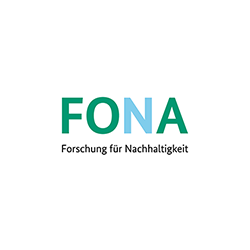Modular concept for sustainable desalination using capacitive deionization at the example of Vietnam
Background:
Until a few years ago, many countries in Southeast Asia such as Myanmar, Cambodia and Vietnam were considered to be countries without significant water problems. However, the water supply of these countries is threatened by rapidly increasing populations and climate change.
Due to the intrusion of seawater in many coastal regions, the groundwater has a high salt content. By 2050 sea levels will rise significantly, accelerating the further salinisation of groundwater, especially during the dry seasons. In addition, many groundwater sources in Vietnam have high concentrations of arsenic - a highly poisonous substance that is washed out of the natural sedimentary rocks in Vietnam and many other Asian countries. This has a strong impact on the health of the population. In addition, water resources have played and continue to play an important role in Vietnam's economic development and are seen as an important factor in the country's socio-economic development.
In order to develop innovative solutions, the joint research project WaKap, funded by the Federal Ministry of Education and Research (BMBF), was launched in September 2016.Since the situation in Vietnam can be regarded as representative for many other countries in Southeast Asia, the project is carried out using Vietnam as an example.
Aims:
The aim of the project is to develop an innovative modular system for the arsenic removal and the desalination of groundwater, seawater and brackish water as well as the setting-up of a pilot plant in Vietnam.
Focus of the work:
The combination of capacitive deionisation (CDI) and reverse osmosis (UO) is intended to significantly reduce energy consumption and increase the yield of drinking water compared to existing desalination processes. For arsenic-rich groundwater, an up-stream in-situ treatment based on an underground deferrisation and demanganisation process is planned in order to remove arsenic and most of the problematic substances (e.g. iron) for CDI treatment.
12/2019: Results and perspectives for practice



